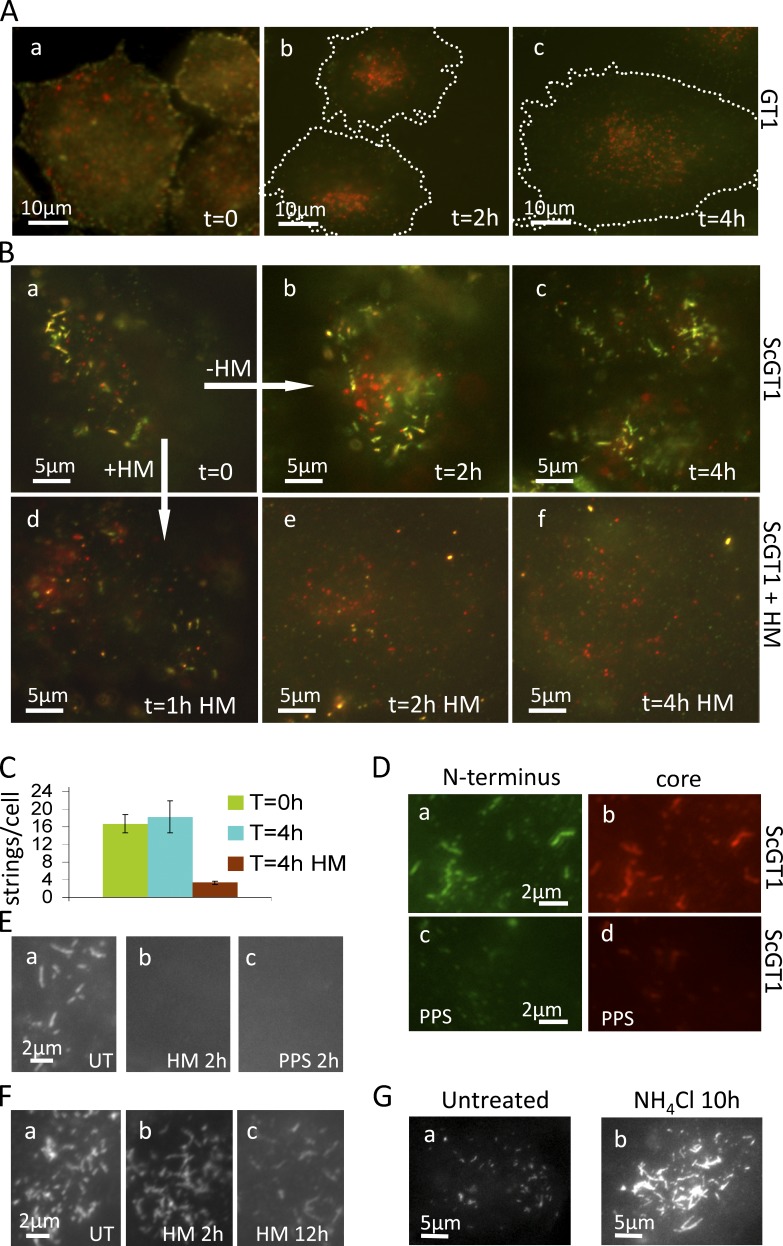Figure 8.
Strings are long lived (>4 h) but are rapidly fragmented and eliminated by sulfated glycans. Strings are more stable in growth-arrested cells. (A and B) Live GT1 (A) and ScGT1 (B) were stained (37°C for 20 min) with a mixture of 8B4 and RRX secondary Fabs (red), chased in unlabeled medium for 0–4 h, and then cooled on ice and labeled again with cy2 secondary Fabs (green) to reveal remnant 8B4-labeled PrP on the cell surface. PrPC rapidly internalized as shown by the intracellular red dots and the lack of green in A (b and c). In contrast, strings were still on the cell surface of ScGT1 after 4 h (B, a–c). In B (d–f), 1 µg/ml HM was included in the chase. Remarkably, strings were fragmented after 1 h (B, d) and disappeared thereafter (e and f). Notice the different scale bars in A and B: A shows entire cells, roughly outlined by the dashed line; whereas B focuses on string clusters. (C) Quantification cy2-labeled (cell surface) strings from the experiment shown in B. ScGT1 at t = 0 h and t = 4 h (with or without HM). For each time point, strings were counted out of a z-stack of four randomly chosen fields with three to five cells/field. Error bars show standard error. (D) ScGT1 untreated or treated with PPS (5 µg/ml; 1 h) were fixed, FA denatured, and stained with N-terminal mAb 8B4 (a and c) and core mAb EP1802Y (b and d). PPS treatment eliminated strings as visualized by both N-terminal mAb 8B4 and core mAb EP1802Y (c and d). Subconfluent (E) or growth-arrested (F) ScGT1 were treated with 1 µg/ml HM or 5 µg/ml PPS for the indicated times, fixed, denatured, and immunostained with 8B4 (E) or SAF32 (F). Most growth-arrested cells still had strings after 2 h of HM treatment, and 10–20% of cells retained some strings even after 12-h incubation with HM (F, c). (G) Abundant and intensely stained (mAb 8B4) strings in ScGT1 cells treated for 10 h with 20 mM NH4Cl.

